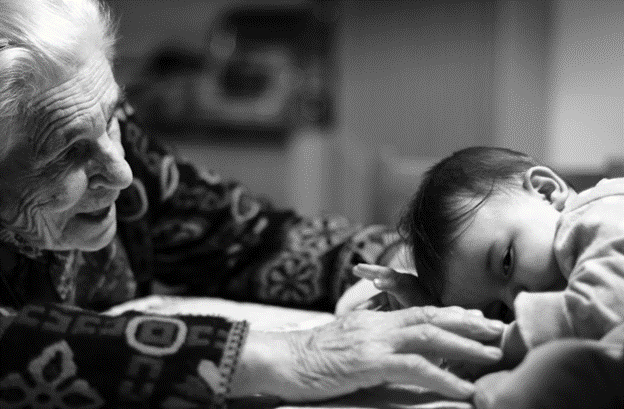Recognizing Seniors During National Homeownership Month

5 Ways Seniors Can Age at Home During National Homeownership Month
June is National Homeownership Month, a time to celebrate and bring awareness to the various housing and support options available to Americans dreaming of homeownership. It’s also a great time to highlight the options seniors and family caregivers have available to them as they plan for their future continuum of care. This June, get to know the options available to seniors wishing to safely and happily age in place.
The Benefits of Aging at Home
A recent survey by Freddie Mac suggests that the majority of aging adults are planning to age at home in 2022. Of the U.S. adults age 55 and older who responded, 66% intended to age in place. That’s no surprise given the many benefits that aging at home can provide to seniors and caregivers alike – not to mention the emotional value that homeownership brings to adults. Aging in place has shown to dramatically increase adults’ overall happiness, health, and quality of life. With support, aging in place can be a beneficial option, even for a senior who has health issues. Seniors who age at home also have the benefit of decreased risk of exposure to illness compared to their peers in senior living communities. Other benefits of aging at home include:
- Increased independence
- More cost-effective
- Sense of familiarity
- Continuity and routine
- Increased health and safety
If you’re not sure what your current options are for aging at home, consider home options that support aging in place.
Home Options For Aging at Home
Multigenerational Living
Multigenerational living has increased within the U.S. over the last several years thanks to its value in helping both seniors and family caregivers who want more housing security. Living in a multigenerational living structure allows a family to combine financial resources for the benefit of the whole family. Since multigenerational family structures allow for a senior to have their own space within the home, seniors have the flexibility to reside in both common areas and personal spaces which has been shown to decrease senior loneliness, increase their overall quality of life, and foster a sense of independence. Another great thing about multigenerational living is that a senior can receive care at home whenever they may need it. Regardless if you’re living with a family caregiver or not, aging at home is easier with a home caregiver. If a big family has a busy schedule, seniors and family members can be assured that their needs are being met with a home health care and hospice care provider to ensure the proper administration of medications, help with personal care, or provide general housekeeping tasks.
Downsizing
Downsizing to a smaller home to better suit a senior’s needs is always a considerable option. For seniors, maybe that means buying a newer home with upgrades and improvements. Perhaps a factor for downsizing is the wish of being closer to family members – or they want to be closer to the city, so transportation is easier. Many seniors want to downsize to a single-level home, or they just don’t want the burden of maintaining a lawn. Whatever the reason, downsizing a home to suit a senior’s needs is always a sustainable option when deciding to age at home. Besides the obvious benefits of downsizing your home, it also brings the possibility of increased independence all around. Less space means less house to maintain and an increased likelihood of having more senior-friendly features like a walk-in bathtub, wider doorways, or even a ramp for easier accessibility.
Home Modifications for Health & Safety
Seniors planning to age at home successfully should always have a home health inspection conducted. In order for a senior to have the best quality of life, they should have access to a safe environment. During a home health inspection, an inspector would look for any potential risks of falling, slipping, tripping, and other immediate risks. Oftentimes, a home inspection also accompanies suggestions or strategies for improving the health and safety of a home. The most common home modifications for seniors include:
- Installing a curbless bathtub
- Adding interior or exterior railings
- Increased outdoor lighting
- Repairs to flooring and entryways
Financial Considerations For Aging at Home
Planning Continuum of Care
Before making any substantial changes or plans for aging at home, It’s important to know the options available to seniors wishing to age happily and successfully at home. So the first step is to identify how the senior plans to include support for their continuum of care. Thankfully, the Medicare program provides financial help and assistance to seniors looking specifically for at-home health care and hospice services including medical equipment and supplies, disease and end-of-life care, skilled nursing, and more. Additionally, if you’re a veteran, there’s financial support available for housing, living expenses, and healthcare, just to name a few, and can be extremely valuable in planning your continuity of care. Similarly, if you’re disabled or collect social security, there are specific programs available to ensure you’re able to successfully age in place.
Mortgage and Loan Options
Whether you plan to stay in your current home or buy a new home, there are many mortgage and loan options available to seniors looking to age in place. If a senior homeowner is experiencing financial difficulty, there may be ways homeowners can ease that burden. Before making any extensive plans, seniors need to be aware of their current financial situation and the amount of equity they have, if any, in an existing home. To get a better understanding of your financial wellness, get your updated credit score and see if you prequalify for a mortgage or loan program, and make the best decisions for your housing and support needs.
Utilizing a Home Equity Line of Credit (HELOC) is a great way to pay for costs associated with home modification or improvements.
Home equity loans or lines of credit are great because of their low-interest rates and give seniors the ability to use their home’s equity to borrow funds for any home improvement projects. The downside is that if your financial situation changes dramatically in the future, you could be at risk of losing your home.
Another popular choice for seniors to consider is a reverse mortgage, which can be a great option for seniors needing financial assistance. Similar to using a HELOC, a reverse mortgage, or a Home Equity Conversion Mortgage, take the home’s equity and disperses it back to a homeowner through monthly payments. As long as the senior is living in the home, payments received from your lender never have to be paid back. However, the loan must be repaid if you ever decide to leave or sell your home.
Regardless of where a senior chooses to age in place, knowing the housing and support options available are the best way to a happy and successful quality of life for the future.



